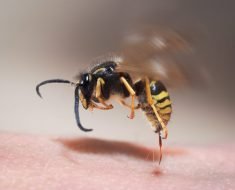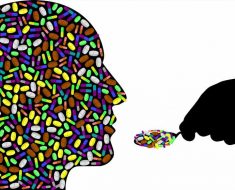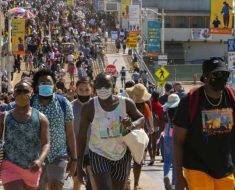When the University of Colorado at Denver completed an investigation in 2015 into the work of a former faculty member, the school recommended that nine papers be corrected or retracted.
But six years after the close of that investigation, the researcher, urologist Hari Koul, has had just two papers retracted and one corrected.
Multiple journal editors told Retraction Watch they had not been informed that papers published in their journals were recommended for retraction or correction, according to documents obtained by Retraction Watch via a public records request. And emails show Koul was still negotiating the retraction of at least one of the papers last year.
Work by Koul, who moved to Louisiana State University (LSU) Shreveport in 2013 (according to his LinkedIn page), first faced scrutiny on PubPeer in 2014. That turned into an investigation at CU Denver.
As recently as last year, the majority of Koul’s works remained unaddressed. And according to emails in the documents and responses from journal editors, Koul apparently didn’t tell multiple journals that his work needed correction.
The case would appear to be one in a long line of those in which the scientific record is corrected years later — or not at all.
According to the investigation report from CU Denver, “An anonymous complaint on PubPeer” on June 2, 2014 led to an inquiry. The allegations were apparently sent to CU Denver, LSU, the National Institutes of Health (NIH), and the U.S. Office of Research Integrity (ORI). The PubPeer posts pointed out potential image manipulation and duplication in three of Koul’s papers, according to the report, and more have since stacked up.
One anonymous PubPeer user posted on one of Koul’s works, “Sincere thanks to the authors for making it an actually fun mystery collage!” before outlining an allegation of image duplication. The commenter concluded the post by writing, “On a more serious note, the fact that there are people that still think they can get away with all these image duplications is baffling.”
LSU completed an inquiry and informed Alison Lakin, a research integrity officer at CU Denver, of its outcome on Aug. 22, 2014, prompting Denver’s full investigation.The university’s standard for determining misconduct involves three requirements, the report said. First, the researcher’s behavior has to mark a “significant departure” from accepted research practices, second, the misconduct has to be committed “intentionally, knowingly, or recklessly,” and third, that the allegations are “proven by a preponderance of the evidence.”
The report outlined the allegations against eight of Koul’s articles, each having to do with image manipulation, duplication or misrepresentation. Members of the investigating committee also heard from some of those who worked in Koul’s lab. In an email on Feb. 1, 2015, for example, one such researcher said there wasn’t pressure to produce in Koul’s lab, but there was “limited oversight of the experiments.”
The person, whose name was redacted from the report, said that Koul didn’t “review the raw data or the compiling of the manuscript. The final manuscript was not pre-reviewed by other authors.” The lab member also wrote that there were no designated lab notebooks and that “everyone had their own method of documentation.”
The committee interviewed Koul on Jan. 4, 2015 – the day it initially planned to complete the investigation based on deadlines due to Federal statutes. But Lakin requested an extension from the ORI due to “the significant number of publications requiring review,” and then requested three more subsequent extensions, according to the report.
When Koul left CU Denver in February 2014, the report said, he took data files for his active projects and “The CU laboratory was dismantled, and old computers cleaned,” the report said, with the only remaining material kept on the CU server. The university did obtain someone’s lab notebook, as well as gel negatives and data Koul had kept from two of the publications.
Koul apparently disagreed with at least one of the comments from his former lab members. The report said that Koul stated on Nov. 18, 2015 that:
These statements are self-serving and some of the statements are completely incorrect.
All the members of the laboratory met each week on Thursdays for 2-4 h. The laboratory members presented their original data generated during the week and received input from their colleagues and I chaired these meetings and provided constructive criticism and scientific direction. All the data was electronically saved by laboratory members on their individual assigned computers. I however, did not review the raw data at the time the fellows compiled the manuscripts.
In the next paragraph of the report, the committee concluded that “there was not a laboratory standard for where data should be stored.” The committee found that more data were likely placed on a local computer separate from the university server, and that “Oversight of data and manuscripts produced by fellows was insufficient, leading to errors.”
The committee’s findings for each publication fit a theme. With the exception of two cases in which “honest error” was responsible, investigators expressed concern about potential image misrepresentation for each of the other articles. But in each case, they lacked the necessary evidence to either absolve Koul or conclusively label the concern as misconduct.
In a summary of its findings, the report said that “The committee struggled to conduct a thorough investigation of these allegations due to the poor record keeping within the laboratory at that time.” It said in “some instances, the investigation committee determined that the discrepancies were due to honest error.” But in other cases, the committee determined it was “more likely than not that the image had been manipulated indicating a level of falsification and / or fabrication.” And that this “may have been conducted with intent.”
But there was “insufficient evidence to determine who conducted this manipulation due to poor record keeping and minimal oversight in the laboratory at the time. The committee, therefore, determined that there was no culpable research misconduct but there was serious research error.”
The committee concluded that because it did not make any determination of scientific misconduct, it would not recommend reporting to any funding agencies (namely the NIH). It found that two of the eight publications investigated had honest mistakes and recommended correction or retraction of each of the eight articles, as well as a ninth article which the panel believed one of the eight had plagiarized.
So far two of the papers have been retracted: “The transcription factor sterile alpha motif (SAM) pointed domain-containing ETS transcription factor (SPDEF) is required for E-cadherin expression in prostate cancer cells,” from the Journal of Biological Chemistry (JBC), which the report says was retracted before the committee made its recommendations, and “Kidney Injury Molecule-1 Is Up-Regulated in Renal Epithelial Cells in Response to Oxalate In Vitro and in Renal Tissues in Response to Hyperoxaluria In Vivo,” from PLOS ONE . The former has been withdrawn in full from one link without a retraction notice, but is still available elsewhere on the journal website.
Another paper in the JBC was corrected and not retracted: “The Transcription Factor SPDEF Suppresses Prostate Tumor Metastasis.”
The six unflagged papers have together been cited more than 120 times since the investigation was completed, according to data from Clarivate Analytics’ Web of Science.
The emails Retraction Watch obtained span, with large gaps, from March 2015 to June 2020. (We have made the emails available here out of order, as we received them.) They discuss Koul’s paper in PLOS One, called “Kidney Injury Molecule-1 Is Up-Regulated in Renal Epithelial Cells in Response to Oxalate In Vitro and in Renal Tissues in Response to Hyperoxaluria In Vivo.”
By this time Koul was at LSU Shreveport, and corresponding with PLOS One as mandated by the report. In the earliest of these emails, Koul forwarded the journal old emails between himself and the first author on the manuscript in which Koul asked for the supporting data for Figure 3B. “Please let me know, ASAP,” Koul wrote on Sept. 24, 2014.
On March 15, 2016, Koul sent a draft of a correction notice to the journal which explained a mistake to which one of the authors had admitted. And the next month, Koul wrote to Lakin “we have repeated experiments for three other publications and are in the process of compiling the data. Needless to say we were able to repeat the results in all three cases.”
The next email we obtained jumps to April 2019, more than three years later, which PLOS told Retraction Watch was due to “resource constraints.” PLOS One asked Koul for data and he replied that the postdoc responsible had returned to India and neither of them had retained the data.”We will repeat the experiment in question,” Koul wrote to PLOS One, “but that is going to take some time.”
Months later, in Oct., 2019, Eileen Clancy, then a senior editor at PLOS One, wrote Koul discussing a possible correction. But in March 2020, Maria Zalm, another senior editor, reached out to Lakin at CU Denver to ask about their investigation. Lakin wrote Zalm the next month summarizing the investigation’s findings and apologized that “the correction was not made as had been indicated.”
Zalm replied on May 4, 2020, saying that the editorial investigation was complete and that the journal had decided to retract Koul’s article. She then wrote to the researcher, saying, “We understand that you are disappointed by the editorial decision, and that you would have preferred to correct the article instead.” She wrote that the investigation into the paper “has not resolved the outstanding concerns with Figure 3B,” and that a repeat experiment would not be enough to resolve the concerns.
Koul later followed up with an email in which he stated he was disappointed, but that he agreed “in principle” with the decision to retract.
The last email in the records from PLOS One, dated June 8, 2020, tells “Koul and colleagues” that “The retraction notice for your article is scheduled for publication on June 11, 2020” — which it was. (The retraction earned a correction a few weeks later.)
Jennifer Regala, the executive editor of the Journal of Urology (which published two of Koul’s papers), told Retraction Watch in an email that “We were not aware of these allegations, so of course these are of grave concern to us.” She added that “The American Urological Association [publisher of the Journal of Urology] takes ethics very seriously,” and that they plan to conduct their own investigation into Koul’s works.
Christophe Nicot, editor of Molecular Cancer, where another of Koul’s works suspected of image manipulation was published, told Retraction Watch in email that “I am not aware of any misconduct being investigated or any request by the authors for the Mol. Cancer article cited.”
Nicot disputed the report’s allegations of image duplication from a previously published article in the similarly-named journal Molecular Cancer Research and wrote “Well, I would say these allegations are false, unfortunately it is not uncommon these days[.]”
He didn’t reply to a follow up email asking about specific images which appear to be duplicated.
The editor of the journal Cancer Research, where another of Koul’s papers is published uncorrected, did not respond to multiple email requests for comment.
An editor at Cancer Letters, where another suspect article is published, bumped our email up to the publisher, Elsevier. Their vice president of communications told us in email that, “I have checked with the editorial team and the journal is not aware of any investigation but is contacting the university to request the relevant details.”
David Knutson, senior communications manager for PLOS sent Retraction Watch the following statement about the journal’s three year pause in communication with Koul:
This case opened with PLOS ONE when a reader notified us of concerns about Figure 3b. Unfortunately, our follow-up work to address the concerns stalled between 2015-2019 due to resource constraints; we sincerely apologize for this long delay. Over the last couple years PLOS has increased our resources devoted to Publication Ethics, and our dedicated Publication Ethics team has been working to address new incoming cases as well as pending cases that were raised before the team was in place.
LSU Shreveport declined to comment on whether it had penalized Koul and suggested we submit a public records request to learn more.
We did so in early May, and have yet to receive any records.
Source: Read Full Article





